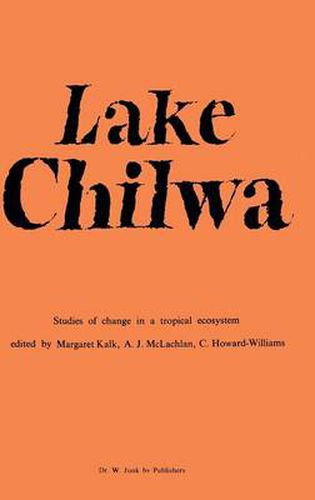Readings Newsletter
Become a Readings Member to make your shopping experience even easier.
Sign in or sign up for free!
You’re not far away from qualifying for FREE standard shipping within Australia
You’ve qualified for FREE standard shipping within Australia
The cart is loading…






This title is printed to order. This book may have been self-published. If so, we cannot guarantee the quality of the content. In the main most books will have gone through the editing process however some may not. We therefore suggest that you be aware of this before ordering this book. If in doubt check either the author or publisher’s details as we are unable to accept any returns unless they are faulty. Please contact us if you have any questions.
Leonard C. Beadle In contrast to the more sta bie oceans, inland waters are, on the geological time scale, short-lived and are subject to great fluctuations in chemical composition and physical features. Very few lakes and rivers have existed continuously for more than a million years, and the life of the majority is to be measured in thousands or less. Earth movements, erosion and long-term climatic changes in the past have caused many of them to appear and disappear. No wonder then that most freshwater organism are especially adapted to great changes and many even to temporary extinction of their environment. Recent studies of residual sediments from existing and extinct lakes in tropical Africa have told us much about their age and the past history of their faunas and floras, from which we may deduce something about the climate and the conditions in the water in the past. The forces that have formed and moulded the African Great Lakes have been catastrophic in their violence and effects. They are not yet finished, but the present rate of change is, in human terms, too slow for direct observation of the ecological effects. The large man-made lakes are providing very good opportunities for studying the chemi cal and biological consequences of the initial filling but, once filled, they are artificially protected against major fluctuations.
$9.00 standard shipping within Australia
FREE standard shipping within Australia for orders over $100.00
Express & International shipping calculated at checkout
This title is printed to order. This book may have been self-published. If so, we cannot guarantee the quality of the content. In the main most books will have gone through the editing process however some may not. We therefore suggest that you be aware of this before ordering this book. If in doubt check either the author or publisher’s details as we are unable to accept any returns unless they are faulty. Please contact us if you have any questions.
Leonard C. Beadle In contrast to the more sta bie oceans, inland waters are, on the geological time scale, short-lived and are subject to great fluctuations in chemical composition and physical features. Very few lakes and rivers have existed continuously for more than a million years, and the life of the majority is to be measured in thousands or less. Earth movements, erosion and long-term climatic changes in the past have caused many of them to appear and disappear. No wonder then that most freshwater organism are especially adapted to great changes and many even to temporary extinction of their environment. Recent studies of residual sediments from existing and extinct lakes in tropical Africa have told us much about their age and the past history of their faunas and floras, from which we may deduce something about the climate and the conditions in the water in the past. The forces that have formed and moulded the African Great Lakes have been catastrophic in their violence and effects. They are not yet finished, but the present rate of change is, in human terms, too slow for direct observation of the ecological effects. The large man-made lakes are providing very good opportunities for studying the chemi cal and biological consequences of the initial filling but, once filled, they are artificially protected against major fluctuations.